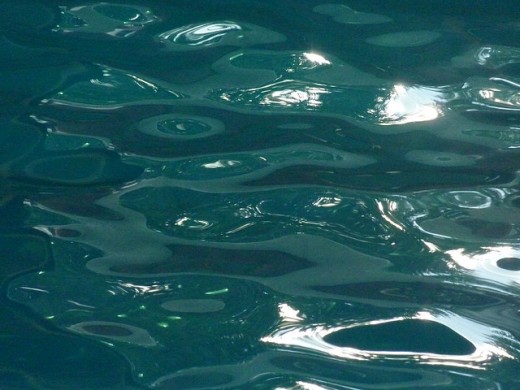Blue Color Psychology

Which blues do you prefer most?
Blue is Trustworthy
Did you know that intellectuals tend to prefer blue? The color for truth, devotion, calmness, and sincerity, blue occupies a very special place in the color spectrum. It is considered the color of spirituality, thought, and the higher mental faculties... but it is also considered the color of intuition.
Although warm colors such as orange and red do not differ much objectively, a cool color like blue may be antithetical -- a blue which in one aspect may be extremely peaceful may be terrifying in another. Blue is also one of the most popular colors for both men and women, as evidenced by four "color of the year" choices by Pantone: Cerulean in 2000, Aqua Sky in 2003, Blue Turquoise in 2005, and Turquoise in 2010. In 2008, the choice went to Blue Iris, a purple color heavily influenced by blue. Pantone only began their "Color of the Year" award in 2000, so blue has received quite the honor!
“In many cultures, Turquoise occupies a very special position in the world of color,” explains Leatrice Eiseman, executive director of the Pantone Color Institute. “It is believed to be a protective talisman, a color of deep compassion and healing, and a color of faith and truth, inspired by water and sky. Through years of color word-association studies, we also find that Turquoise represents an escape to many – taking them to a tropical paradise that is pleasant and inviting, even if only a fantasy.”

Color
| General Appearance
| Mental Associations
| Direct Associations
| Objective Impressions
| Subjective Impressions
|
|---|---|---|---|---|---|
Blue
| Transparent, wet
| Cold, sky, water, ice
| Service, flag
| Subduing, melancholy, comtemplative, sober
| Gloom, fearfulness, furtiveness
|
Table data from "Color Psychology and Color Therapy" by Faber Birren, authority on the use of color.

The Color of Security
Traditionally, blue tones repel the evil eye. Historically, turquoise stones were used in hamsas as a sign of protection. So it makes sense that the psychology of blue would involve blue as the color of sanctuary or redemption.
In marketing, deeper blues such as midnight blue or navy are better suited for corporate colors, whereas if friendliness is the goal (like with social websites), stick with lighter tones.
Treating Disease with Blue
According to practitioners of chromatherapy (a method of Ayurvedic medicine using color for healing), the effects of blue are many:
- Blue acts specifically on the blood, having a tonic (bracing) effect
- It has antiseptic properties and is bacteriocidal
- It is cold, has electrical properties, and contracting abilities
- Blue is anticarcinogenic.
Psychologically, the effects of blue include:
- Being good for over-excitement
- Being the color for meditation and spiritual expansion
- It can be even more soothing than green in emotional conditions
- Relaxing the mind and controlling the throat chakra (the creative power center)
Decorating with Blue
The first type of decor I picture when faced with blue is "beach house chic". When you can look outside and see not only sky, but a vast expanse of ocean or even a large lake, you will want to keep the inside of your house feeling light and airy as well.
Do break up an overabundance of blue, however -- being surrounded by too much will produce a tired or depressed feeling. Pick a bright color like white to offset it - maybe a coral if you are sticking with the beach theme, or a mossy green to keep things looking organic.
Facts About Blue
- In insect repellents, the bluer the light, the more insects it will attract.
- Mosquitoes prefer dark blue as a landing spot over any other color
- Blue is the least appetizing color... it has been suggested to weight management subjects to eat from a blue plate
- Blue suggests the form of a circle or sphere
- Blue objects seen at a distance will never create a sharp image to the eye
- In ancient heraldry, blue represents piety and sincerity.
Resources
Amber, Reuben, Color Therapy. Aurora Press, New York, 1983.
Birren, Faber,Color Psychology and Color Therapy. Citadel Publishing, New York, 1950
https://www.pantone.com/pages/myp_mypantone/mypinfo.aspx?ca=75&pg=20706
http://printmediacentr.com/2011/02/infographic-the-psychology-of-color-for-web-design/









